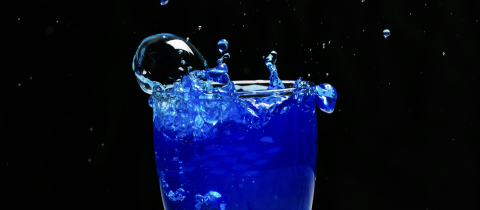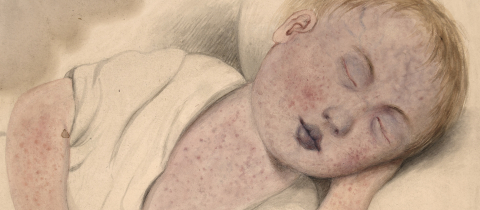The link between cigarette smoking and lung cancer is widely acknowledged. But not everyone who smokes gets lung cancer and not everyone who gets lung cancer is a smoker. How does one contract the so-called non-smoker’s lung cancer? The answer, one might say, is blowing in the wind. And that wind may be blowing a gas called radon.
Radon is a naturally occurring colourless and odourless radioactive gas that according to the World Health Organization (WHO) is responsible for up to 14% of all cases of lung cancer. The source of radon is uranium, a radioactive element found in soil and rocks.
The term “radioactive” alarms many people. Justifiably so. Atoms of radioactive elements are unstable and spontaneously disintegrate into other elements, in the process giving off rays of energetic particles that can damage tissues and cause disease. When uranium undergoes radioactive decay, one of the products it forms is radon, which is itself radioactive and gives off dangerous high-energy rays. The gas can seep into basements and crawl spaces wherever uranium is present in the soil. Whether it does, depends on how fissures are structured in the ground underneath homes. It is possible for the basement of one house to be contaminated with radon while an adjacent home is unaffected. Granite, a stone that is composed mostly of silicon dioxide (quartz) can harbour trace amounts of uranium compounds and can therefore also be a source of radon.
Uranium was first discovered by the German chemist Martin Henrich Klaproth in 1789, but its radioactive property was not identified until 1896 by French physicist Henri Becquerel. Polish-French physicist/chemist Marie Curie subsequently coined the term “radioactivity” after discovering two additional elements, radium and polonium, that like uranium fragmented into other elements accompanied by the emission of “rays” of energy.
Every element has a nucleus composed of positively charged particles called protons, and neutral particles termed neutrons. Like charges repel each other, but proton-proton repulsion is reduced by neutrons squeezing in-between the protons. Negatively charged electrons roam about the nucleus in different shells, with the outer-most shell referred to as the valence shell.
Elements with large nuclei, such as uranium, tend to be unstable. To achieve stability, they undergo spontaneous radioactive decay. Uranium-238, so-called because it has 92 protons and 146 neutrons in its nucleus, undergoes radioactive decay through 14 steps, eventually yielding lead-206, a stable nucleus. One of the nuclei produced in this lengthy chain is that of radon. As soon as radon forms, it begins to undergo radioactive decay into lighter elements by giving off alpha particles that are composed of two protons and two neutrons. When radon is inhaled, alpha particles become trapped in lung tissues and can damage DNA. Such damage can result in cancer over time.
How does this happen? Alpha particles are a type of “ionizing radiation,” defined as radiation that is energetic enough to break chemical bonds in molecules. When water, which makes up 70% of human cells, is the target if such radiation, one of the breakdown products formed is a hydroxyl radical. This species is “electron hungry” and can steal electrons from other molecules such as DNA. Since electrons are the “glue” holding atoms together in molecules, their loss leads to molecular damage such as a change in a DNA sequence. Such a “mutation,” if uncorrected by the body’s DNA repair processes, can be passed on to generations of daughter cells which over time can transform into cancer cells. Mutations can also occur without the involvement of water. Radioactive emissions can attack DNA directly and disrupt its structure.
Radioactivity is measured in picocuries per litre of air (pCi/L). On average, in North America, outdoor levels are around 0.4 pCi/L whereas indoor levels are higher, at roughly 1.3 pCi/L. It is recommended that protective measures be taken if indoor radon levels are above 4 pCi/L. Smokers and former smokers are at greater risk than non-smokers.
Various types of radon tests are available. The simplest ones, readily available at a reasonable cost, feature a canister filled with activated charcoal that absorbs radon as air passes through it. The canister is then sent to a laboratory where instruments detect and count the radioactive particles emitted. Another type of device contains a plastic film that is etched by alpha particles leaving tracks that can be visualized and counted in a lab. Also available are electronic detectors that require installation but can monitor radon levels continuously.
Health Canada recommends a kit that collects radon for three months as the most accurate way of testing for the gas. As a general rule, the longer the time during which air is sampled, the more accurate the results. Detailed information on radon is available from Health Canada at https://www.canada.ca/en/health-canada/services/health-risks-safety/radiation/radon.html as well as the Environmental Protection Agency (EPA) website, or by calling 1-800-SOS-RADON.
Takeaway: Measure your household radon levels and fix if needed. As for that beautifully polished granite countertop in your kitchen, no worries, as the traces of radon gas emitted are negligible relative to ambient amounts in the air, especially in properly ventilated homes. Bon Appétit and Happy Holidays!
Dr. Nancy Liu-Sullivan holds a Ph.D. in biology and served as a senior research scientist at Memorial Sloan Kettering Cancer Center. She currently teaches biology at the College of Staten Island, City University of New York.







